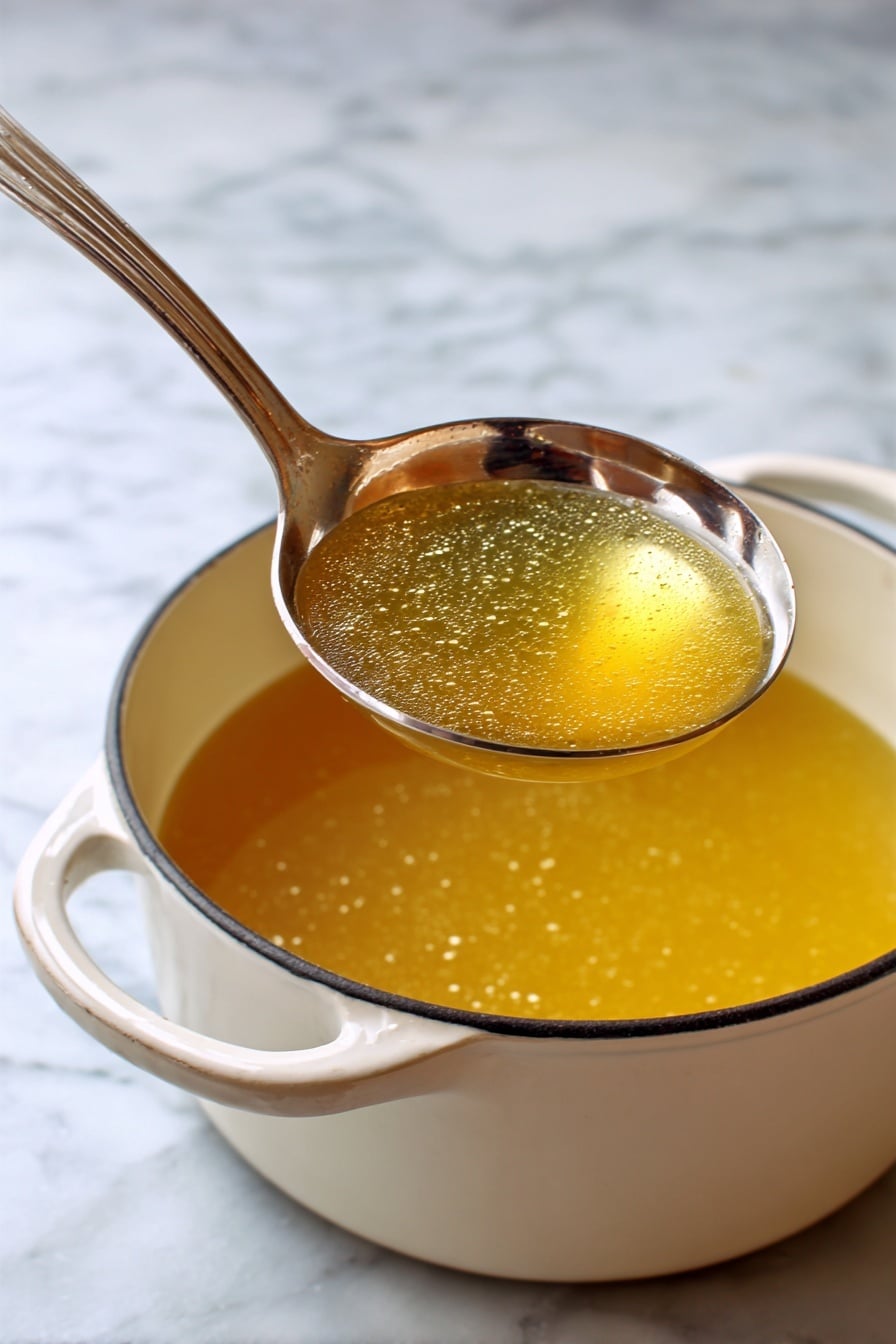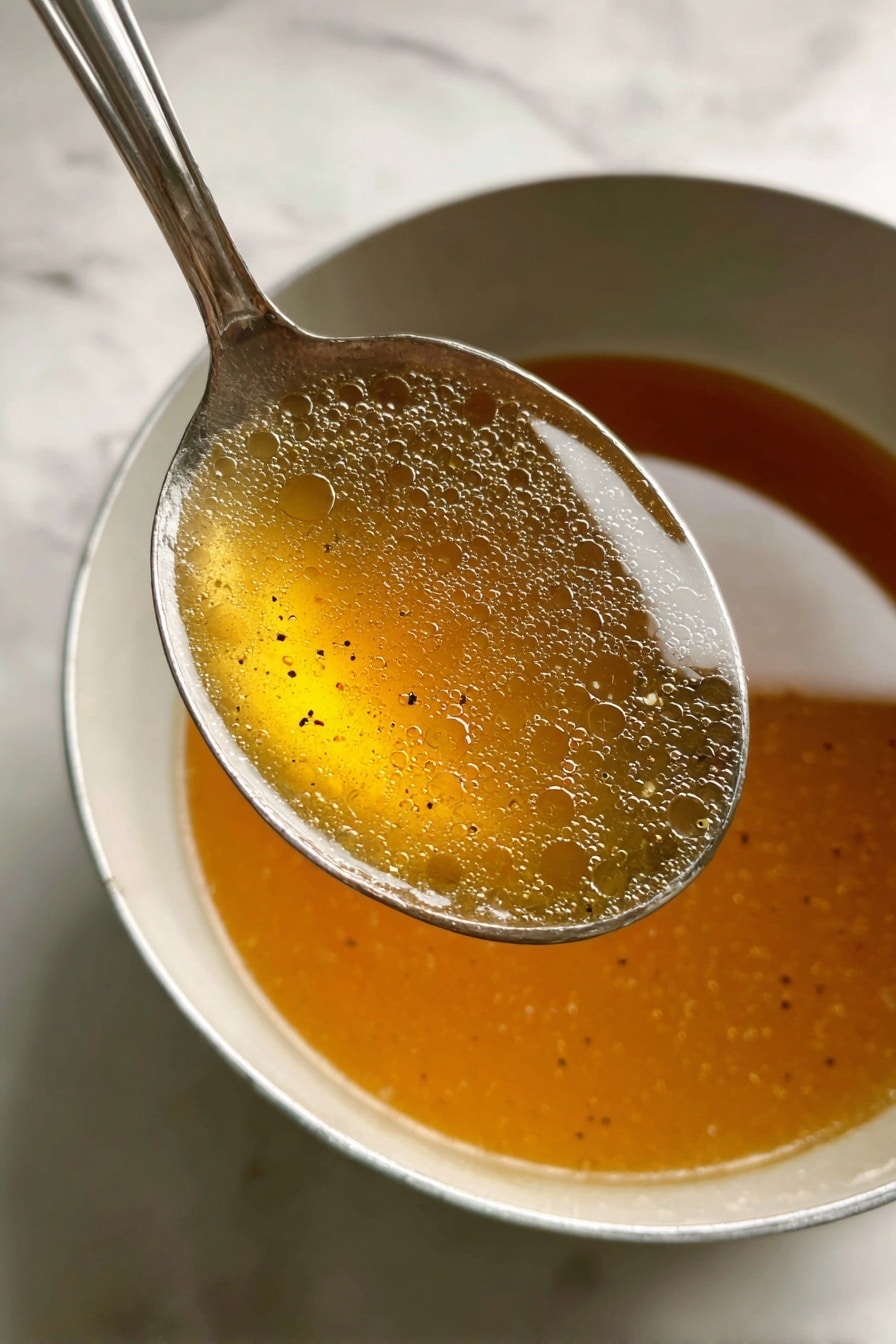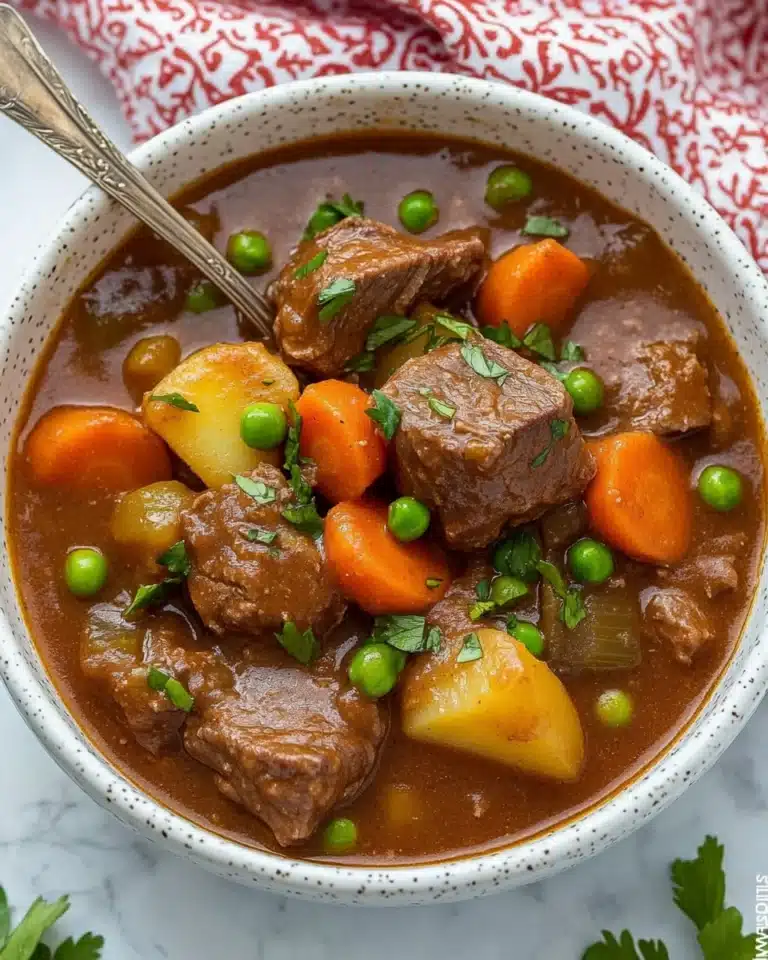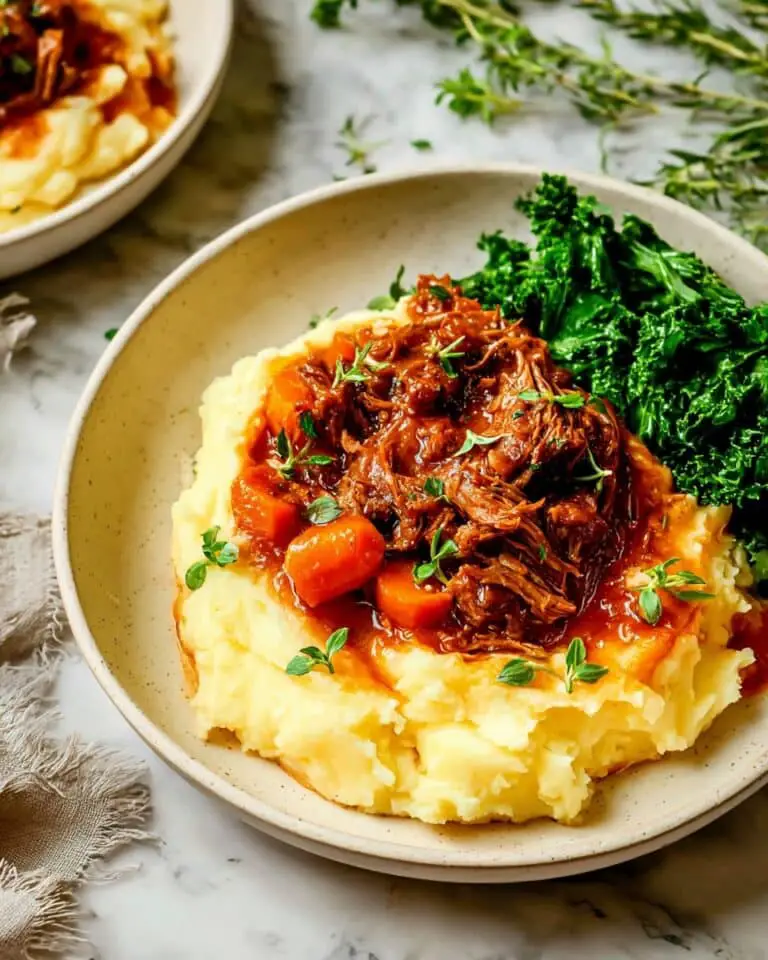If you’ve ever wanted to capture that deep, rich flavor from your Thanksgiving turkey leftovers or just want a fantastic base for soups and stews, then my Homemade Turkey Stock Recipe is absolutely for you. I love this recipe because it’s simple, uses basic ingredients you probably already have, and fills your kitchen with the most comforting aroma. Trust me, once you try making your own stock, you’ll never go back to store-bought again!
Why You’ll Love This Recipe
- Rich Flavor: Roasting the turkey wings adds a beautiful depth of flavor you just can’t get from boiling alone.
- Simple Ingredients: You’ll find everything you need is fresh and easy to find – no complicated pantry hunts required.
- Versatile Base: Use this stock for soups, gravies, risottos, or even as a cooking liquid for grains.
- Hands-off Simmer: Once it’s on the stove, you can relax or prep other dishes while it slowly builds flavor.
Ingredients You’ll Need
The beauty of this Homemade Turkey Stock Recipe lies in using simple, quality ingredients that work harmoniously. Fresh herbs and roasted wings make all the difference, so I always recommend grabbing the freshest you can find and not skipping the roasting step—it makes the stock sing.
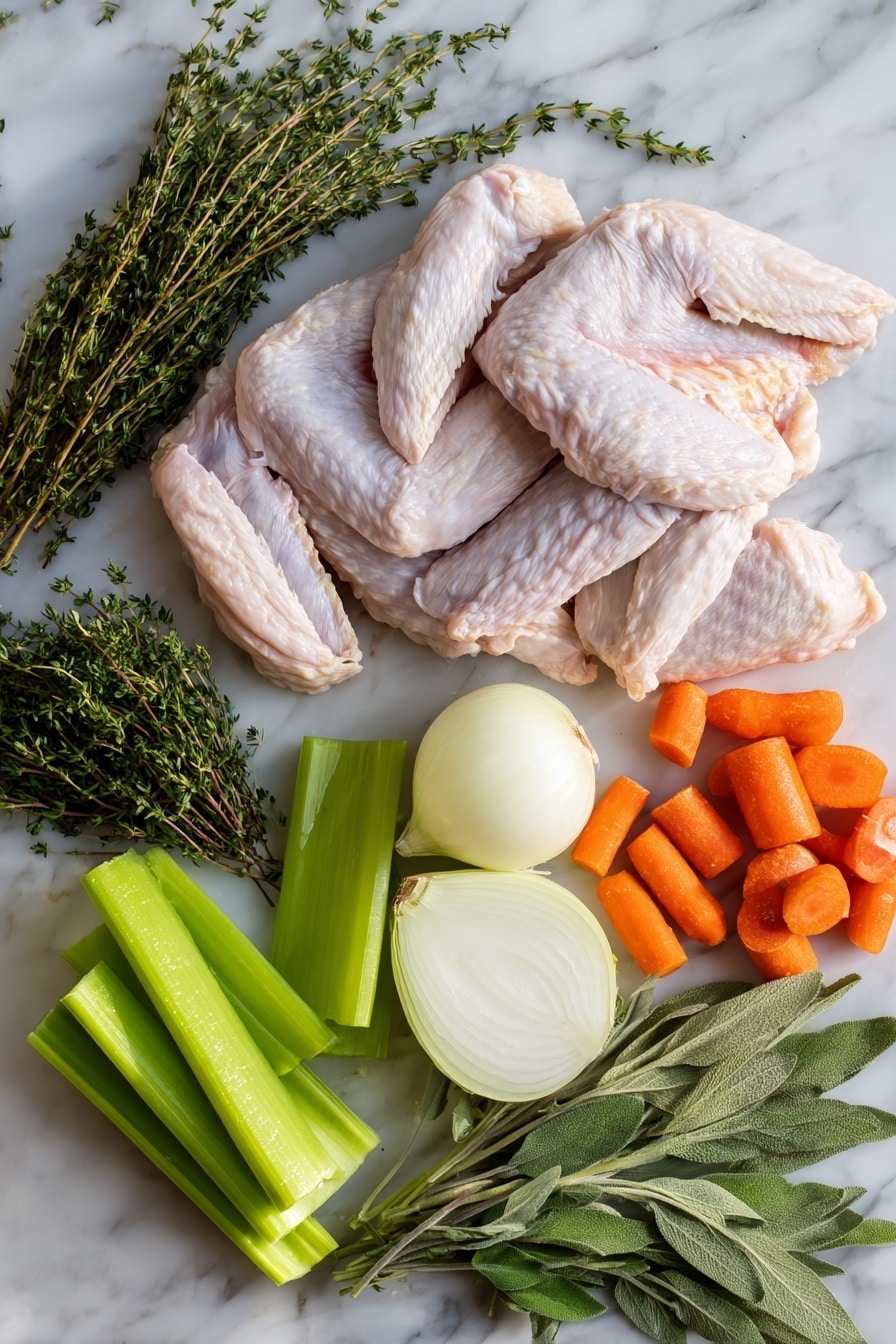
- Turkey (or chicken!) wings: Wings have the perfect meat-to-bone ratio to add richness and body to your stock.
- Kosher salt and pepper: Essential for seasoning during roasting and at the end to balance flavors.
- Olive oil: Helps achieve that gorgeous golden brown when roasting the wings and caramelizing the veggies.
- Onions: Halved for roasting and browning, onions add sweetness and depth.
- Carrots: Give a subtle earthy sweetness to the stock when caramelized.
- Celery stalks: Bring freshness and that classic stock flavor.
- Fresh parsley: Adds bright herbal notes without overpowering the stock.
- Fresh thyme sprigs: Infuse gentle woodsy aromas.
- Fresh sage: Provides an earthy warmth that works beautifully with turkey.
Variations
This Homemade Turkey Stock Recipe is like a blank canvas, and I encourage you to make it your own. Whether you’re working with what’s in the fridge or catering to dietary needs, there’s room to tweak and experiment. I’ve found small changes can make a big difference in flavor nuances.
- Use leftover turkey neck and carcass: I sometimes roast the neck with the wings for extra meaty flavor, especially if I’m saving the carcass from dinner.
- Add garlic cloves: If you love a richer, more aromatic stock, toss in a few smashed garlic cloves when browning the vegetables.
- Make it vegetarian: Swap turkey wings for mushrooms, more veggies, and herbs to create a deeply flavored vegetarian stock.
- Herb swap: I’ve tried rosemary or bay leaves instead of sage or thyme – both worked beautifully depending on what I was making.
How to Make Homemade Turkey Stock Recipe
Step 1: Roast the Wings to Unlock Flavor
Preheat your oven to 450°F. Toss the turkey wings in kosher salt, pepper, and half the olive oil. Spread them out in a single layer on a roasting pan or baking dish. Roast for 30 minutes, then flip and roast another 30–40 minutes until golden and crispy. This browning step is what adds that irresistible depth to the stock—you don’t want to skip it!
Step 2: Caramelize Vegetables on the Stove
While the wings roast, heat the remaining olive oil in a large stock pot over medium heat. Add the onions, carrots, and celery with a pinch of salt and pepper. Stir occasionally and cook until they’re golden and caramelized. This step is key because it builds layers of flavor right at the base of your stock pot.
Step 3: Combine and Simmer
Once the wings are perfectly roasted, add them to the pot with the veggies. Toss in your fresh herbs—parsley, thyme, and sage. Fill the pot with about 14 to 16 cups of water, just enough to fully cover the ingredients. Bring it all to a boil, then reduce to a gentle simmer. You’ll simmer uncovered for 30 minutes at first, which helps start the flavor extraction.
Step 4: Slow Simmer for Deep Flavor
After that first 30 minutes, check the water level—add a little more if a lot has evaporated. Then cover and let the stock gently simmer for another 2 to 2.5 hours. Stir every now and then. This slow simmer pulls out every last bit of flavor from the turkey wings and veggies, resulting in a broth that’s rich, silky, and just wonderful.
Step 5: Strain and Season
Turn off the heat and use tongs to remove the wings and vegetables. Then strain your stock through a fine mesh strainer or cheesecloth into a large bowl or pot. I usually strain my stock two or three times to get it nice and clear. Don’t forget to taste! You’ll likely need to add 1-2 teaspoons of kosher salt to bring out those beautiful flavors.
Step 6: Cool and Store
After seasoning, let the stock cool. You can induce cooling by placing the pot in an ice bath or simply letting it sit uncovered until it’s lukewarm. Once cooled, pop it in the fridge—fat will rise to the top and solidify, making it easy to skim off if you want a leaner stock. This also helps your stock keep longer and taste fresher.
Pro Tips for Making Homemade Turkey Stock Recipe
- Brown Everything Thoroughly: Don’t rush the roasting or browning steps—this caramelization builds the flavor foundation.
- Keep an Eye on Water Level: Stock should always cover ingredients; add hot water if needed to avoid a bitter burnt taste.
- Strain Multiple Times: Clear stock looks and tastes better, plus it makes sauces and soups silkier.
- Cool Quickly: I learned the hard way that rapid cooling in an ice bath helps keep flavor fresh and reduces bacteria.
How to Serve Homemade Turkey Stock Recipe
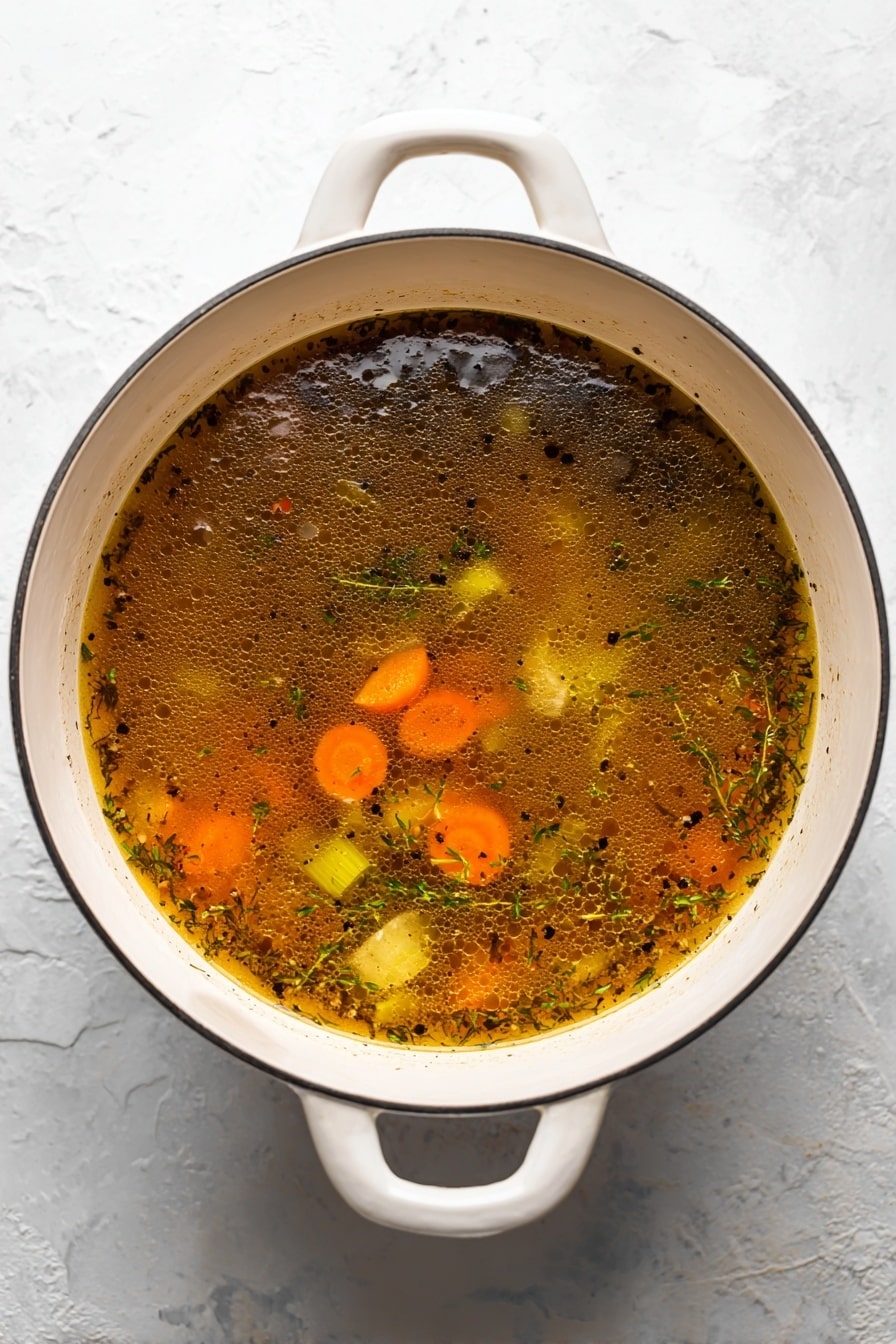
Garnishes
I often sprinkle fresh parsley or a few thyme leaves right in the bowl when serving turkey soup made from this stock. A squeeze of fresh lemon juice can also brighten the flavor beautifully. If you want some richness, a small drizzle of good olive oil or a touch of grated Parmesan on top works wonders.
Side Dishes
This stock is a fantastic foundation for turkey soup served alongside crusty artisan bread or buttery biscuits. For a cozy meal, I pair it with a simple roasted vegetable medley or a green salad dressed in tangy vinaigrette to balance the richness.
Creative Ways to Present
For a special occasion, I’ve ladled this homemade turkey stock into small cups with fancy garnishes like microgreens and edible flowers. It makes a lovely starter to impress guests. You can also freeze it in individual portions in fun silicone molds to pop into soups or risottos anytime—super handy!
Make Ahead and Storage
Storing Leftovers
I keep leftover stock in airtight containers in the fridge for up to 4 days. I always make sure it’s fully cooled before sealing the container to avoid condensation and spoilage. I actually label mine with the date, so I never forget when I made it!
Freezing
Freezing homemade turkey stock is a lifesaver, especially when I make large batches. I portion mine out into freezer-safe bags or containers, sometimes even ice cube trays for smaller amounts. It freezes beautifully and keeps for up to 3 months, ready whenever you need a flavor booster.
Reheating
When reheating, I gently warm the stock over low to medium heat to prevent scalding. Stir occasionally to maintain that silky texture. If the stock has thickened or gelled in the fridge or freezer, no worries—it’ll melt back down perfectly as it heats.
FAQs
-
Can I use other parts of the turkey for this stock?
Absolutely! Turkey necks, carcass pieces, or even leftover bones work wonderfully. Just roast them along with the wings for maximum flavor and follow the same instructions.
-
How long can I keep homemade turkey stock in the fridge?
Stored properly in airtight containers and refrigerated promptly, homemade turkey stock will last about 3 to 4 days. If you think you won’t use it that fast, freezing is your best bet.
-
Do I have to roast the wings first?
While not absolutely required, roasting the wings first develops richer, deeper flavors thanks to the Maillard reaction. Skip this step and your stock will be lighter and less complex.
-
Can I use this stock in recipes other than soup?
Yes! This turkey stock is brilliant in gravies, risottos, braises, and even cooking grains like quinoa or rice to add extra flavor.
-
How do I remove the fat from homemade turkey stock?
Once cooled in the fridge, the fat solidifies on top and can be easily skimmed off with a spoon. This is a great way to lighten your stock if you prefer.
Final Thoughts
I can’t tell you how many times this Homemade Turkey Stock Recipe has saved me—whether I’m turning leftovers into a comforting soup or just need a flavorful base for dinner. It feels like a little gift of warmth and tradition every time I make it. Give it a go, and I bet you’ll fall in love with homemade stock just like I did. Plus, you’ll feel proud knowing exactly what’s gone into every delicious sip and spoonful!
Print
Homemade Turkey Stock Recipe
- Prep Time: 1 hour
- Cook Time: 3 hours 10 minutes
- Total Time: 4 hours 10 minutes
- Yield: 10 cups
- Category: Soup Stock/Broth
- Method: Roasting and Stovetop Simmering
- Cuisine: American
Description
This homemade turkey stock recipe delivers a rich, flavorful base perfect for soups, stews, and sauces. Made from roasted turkey wings and aromatic vegetables, it’s simmered slowly to extract deep flavors, resulting in a comforting and versatile broth that’s as wholesome as it is delicious.
Ingredients
Turkey
- 3 pounds turkey wings
- Kosher salt and pepper, to taste
- 2 tablespoons olive oil, divided
Vegetables
- 2 onions, cut in half
- 2 carrots, cut into pieces
- 2 celery stalks, cut into pieces
Herbs
- 1 handful fresh parsley
- 2 sprigs fresh thyme
- 1 handful fresh sage
Instructions
- Roast the Turkey Wings: Preheat your oven to 450 degrees F. Place the turkey wings in a baking dish and season generously with kosher salt and pepper. Brush them with 1/2 tablespoon of olive oil. Roast for 30 minutes, then flip the wings and roast for an additional 30 to 40 minutes until golden brown and aromatic.
- Sauté the Vegetables: While the wings are roasting, heat the remaining 1 1/2 tablespoons of olive oil in a large stock pot over medium heat. Add the onions, carrots, and celery with a pinch of salt and pepper. Cook the vegetables, stirring occasionally, until they become golden and caramelized on all sides, bringing out their natural sweetness.
- Combine Ingredients in Stock Pot: Transfer the roasted turkey wings to the pot with the sautéed vegetables. Add the fresh parsley and thyme. Pour in about 14 to 16 cups of water, enough to cover the ingredients fully, and bring the mixture to a boil.
- Simmer the Stock: Once boiling, reduce the heat to a gentle simmer. Allow the stock to simmer uncovered for 30 minutes. If necessary, add more water to maintain the liquid level. After the initial simmer, cover the pot and continue simmering for 2 to 2.5 hours, stirring occasionally and checking periodically.
- Strain the Stock: Turn off the heat and carefully remove the turkey wings and large vegetable pieces with tongs. Strain the stock through a fine mesh strainer or cheesecloth into a large bowl or multiple bowls to remove solids and any residual bits. For clarity, strain the stock one or two more times if desired.
- Season and Cool: Taste the strained stock and season with 1 to 2 teaspoons of kosher salt or to your preference. Allow the stock to cool either by placing it back into a clean pot with a lid or using an ice bath. Once cooled, refrigerate promptly. After chilling, skim off any solidified fat from the top if desired.
Notes
- For added flavor, you can also roast the turkey neck with the wings or brown it alongside the vegetables in the stock pot before adding water.
- Simmering the stock uncovered initially helps develop a richer flavor through evaporation.
- Multiple straining ensures a clear, clean stock without unwanted solids.
- Skimming fat after refrigeration makes the stock leaner and healthier, but some fat can enhance flavor.
- Store leftover stock in airtight containers in the refrigerator for up to 5 days or freeze for longer storage.
Nutrition
- Serving Size: 1 cup (240ml)
- Calories: 70
- Sugar: 1g
- Sodium: 150mg
- Fat: 3.5g
- Saturated Fat: 1g
- Unsaturated Fat: 2g
- Trans Fat: 0g
- Carbohydrates: 3g
- Fiber: 0.5g
- Protein: 7g
- Cholesterol: 30mg

